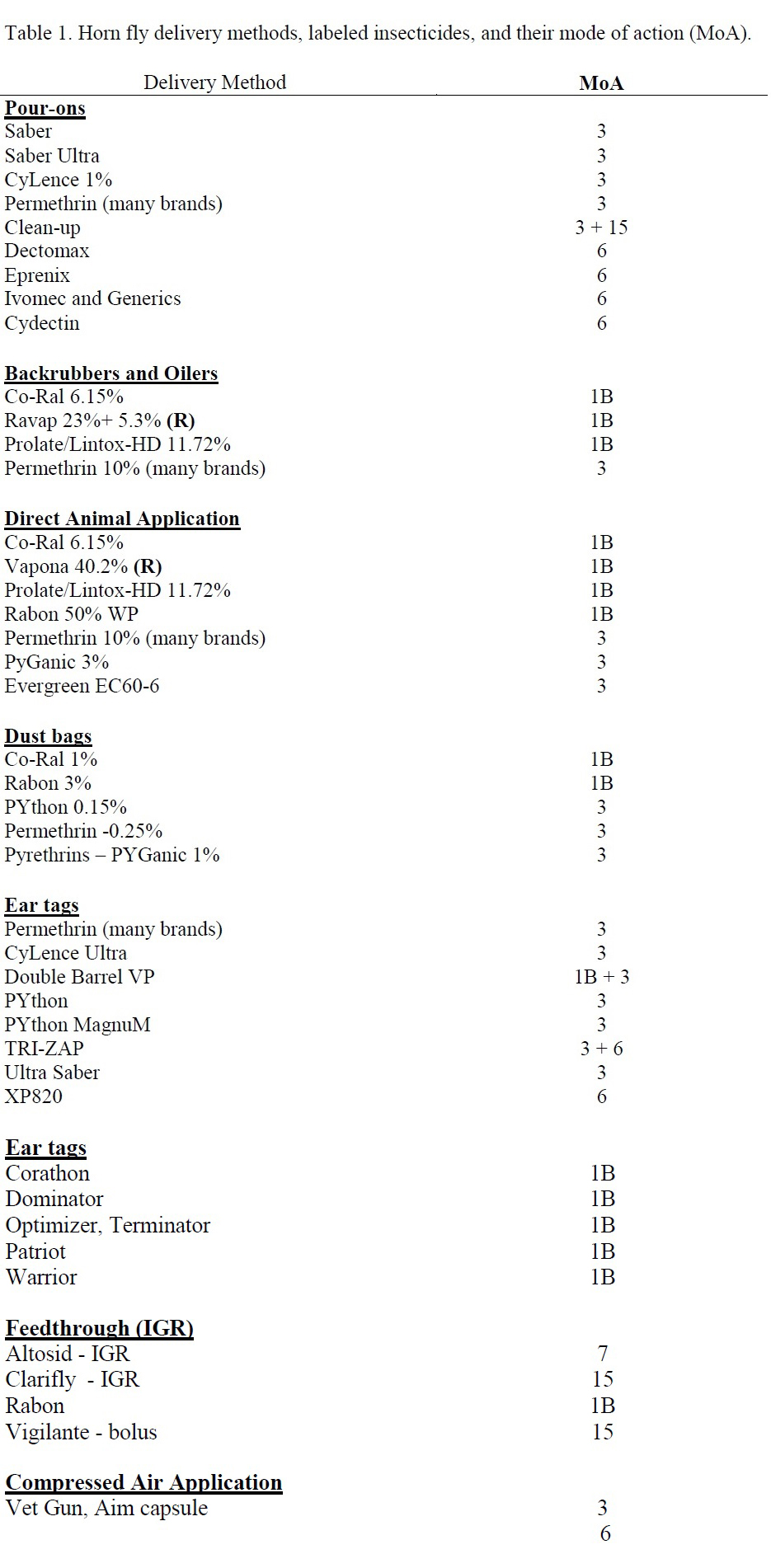Controlling Horn Flies on Pastured Cattle

Livestock producers will soon be sending cattle to summer pastures. Horn flies are a perennial pest of pastured cattle since their introduction from Europe in the 1880s. The horn fly spends most of its time on cattle, mainly on the animal’s backs, sides and when temperatures are very warm, on the belly region. Both sexes of horn fly feed on blood, averaging between 28 and 38 blood meals per day, with each blood meal lasting about 10 minutes. When horn fly numbers exceed 200 flies per animal, cattle will become more stressed due to fly biting. This stress reduces milk production in mother cows and grazing time, which leads to reduced weight gains. The annual economic losses caused by this fly have been estimated at $1billion in the United States. The fly has also has been implicated in causing summer mastitis. Horn fly numbers on Nebraska cattle can often exceed several thousand flies in late August or early September (Figure 1) .
Ear tag strips that have been utilized in past years, will not be available for the 2019 fly season. The strip is currently undergoing some design modifications. With most insecticide ear tags, it is strongly recommended to use two tags per adult animal for horn fly control. If face flies are present, apply one tag per calf. Delaying tagging until the last week of May or first week of June will provide the greatest impact on horn fly numbers through the fly season. Insecticide ear tags applied in late April or early May either need to be refreshed by mid-summer, or another fly control method implemented to insure season-long reduction in horn fly numbers.
Many horn fly populations in Nebraska exhibit some tolerance to synthetic pyrethroid insecticides. To manage fly tolerance issues, be sure to alternate insecticide classes of dusts, insecticide ear tags, animal sprays, pour-ons, and feedthroughs (IGRs). A list of delivery methods, labeled insecticides, and their Mode of Action (MoA) groups for horn fly control are found in Table 1. This includes organophosphates (Group 1B), pyrethroids and pyrethins (Group 3), avermectins and milbemycins (Group 6), juvenile hormone analogues (Group 7A), and benzolyureas –chitin inhibitors (Group 15). Continual use from a single MoA against a species can lead to resistance to all products in the group. To improve control, rotate between MoA groups during the fly season or at least annually.








